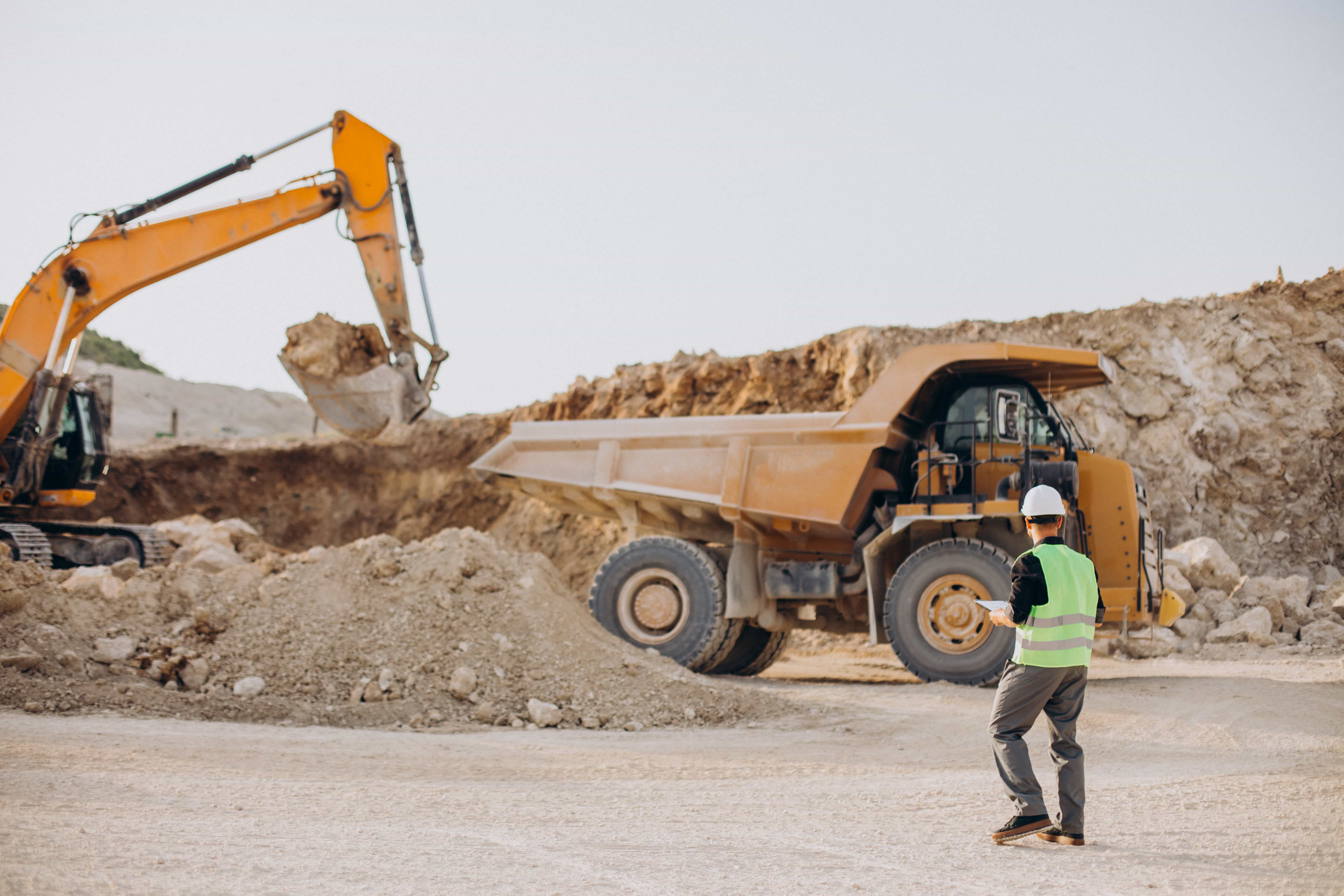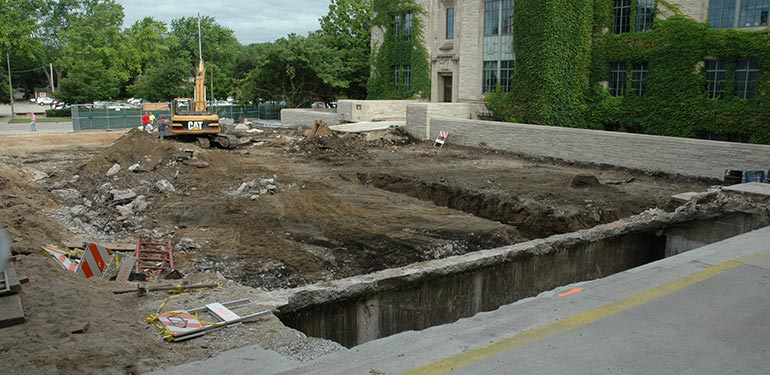Geotechnical Geologist Services for Accurate Soil and Rock Analysis
A Comprehensive Exam of the Services Supplied by Consulting Engineers in the Field of Geotechnical Engineering: From Website Investigation to Job Implementation
Consulting engineers in geotechnical engineering play a pivotal role in the effective implementation of building and construction jobs, beginning with extensive site examinations that disclose important subsurface problems. Their know-how prolongs to soil residential or commercial property assessments, ecological effect assessments, and the careful surveillance of job implementation, ensuring placement with security and sustainability standards.
Relevance of Geotechnical Engineering
Geotechnical engineering is an essential self-control that underpins the safety and sustainability of civil framework jobs. By understanding the mechanical behavior of soil and rock products, geotechnical engineers assess the viability of sites for numerous constructions, consisting of buildings, bridges, and dams. This basic analysis makes certain that structures can hold up against environmental variables and loads without experiencing failing.
The importance of geotechnical design expands beyond plain structural security; it additionally includes ecological stewardship. Proper geotechnical evaluations add to reducing the environmental influence of construction. With mindful assessment of dirt residential or commercial properties and groundwater conditions, designers can design foundations and maintaining frameworks that mitigate dangers such as disintegration and landslides, advertising lasting stability.
Furthermore, geotechnical engineering plays a crucial duty in project cost administration. geotechnical works. By determining possible concerns early in the design phase, engineers can suggest proper options, hence staying clear of pricey hold-ups and redesigns throughout construction. This proactive approach not only enhances project efficiency but also considerably decreases risks related to unexpected site conditions
Website Examination Strategies
Reliable website investigation techniques are important for gathering accurate information concerning subsurface conditions prior to construction. These strategies promote the understanding of the geological and hydrological setting, which is important for making sure the stability and safety of recommended frameworks.
Typical methods used in website investigations consist of borehole boring, which enables designers to remove soil examples at numerous depths, providing understandings into stratification and product types. Furthermore, geophysical surveys, such as seismic refraction and electrical resistivity, deal non-invasive means to assess subsurface attributes over larger areas. These methods can assist identify anomalies without comprehensive excavation.
Test pits are an additional valuable strategy, supplying straight monitoring of dirt layers and enabling in-situ testing. geotechnical works. This technique is specifically useful for shallow excavations and can help analyze groundwater levels. Cone penetration examinations (CPT) are significantly utilized, as they supply continual profiles of soil resistance, which assists in determining soil stamina and layering.
Each of these strategies plays an important function in creating a comprehensive understanding of site problems, making it possible for consulting designers to make informed decisions and suggestions throughout the job lifecycle. Exact information collection during the site investigation phase is essential to mitigating threats and making certain successful project implementation.
Soil Building Assessment

The analysis process typically includes a mix of lab examinations and field examinations. Key buildings such as shear stamina, compressibility, leaks in the structure, and moisture material are evaluated to figure out the dirt's suitability for building and construction purposes. Common examinations, including the Atterberg limitations, Proctor compaction, and triaxial shear tests, are commonly utilized to collect data on soil habits.
Along with these tests, in-situ techniques such as the Requirement Infiltration Examination (SPT) and Cone Penetration Examination (CPT) offer beneficial understandings right into dirt stratigraphy and density. The results of these assessments inform engineers concerning possible obstacles, such as soil liquefaction or settlement, enabling them to create ideal reduction techniques.
Environmental Effect Examination
Ecological influence evaluation plays an important function in the preparation and execution of engineering jobs, especially in geotechnical design. This procedure includes examining the possible ecological consequences of proposed projects on soil, water, air quality, and surrounding communities. Consulting engineers utilize various methodologies, including website analyses, modeling, and area research studies, to determine and quantify these impacts.
The evaluation typically starts with the recognition of standard environmental problems, which works as a recommendation for anticipating potential changes. Designers examine elements such as erosion, groundwater contamination, and environment interruption, guaranteeing that all pertinent ecological policies and guidelines are followed throughout the project lifecycle. Stakeholder engagement is likewise an essential component of the examination process, as it cultivates communication in between job developers, neighborhood communities, and governing bodies.
Moreover, mitigation methods are developed to resolve determined influences, enabling designers to propose choices or modifications to predict designs that improve sustainability. This proactive method not just reduces damaging effects on the atmosphere yet likewise advertises public trust and compliance with ecological legislation. Eventually, reliable ecological impact examination reinforces the overall stability and stability of geotechnical engineering tasks, supporting liable growth practices.
Job Application and Surveillance

Surveillance is a vital component of job execution. Engineers make use of various click to read methods, such as instrumentation and area tests, to examine soil habits and architectural responses in real-time. This constant surveillance enables the recognition of any kind of discrepancies from anticipated efficiency, allowing for timely treatments to mitigate risks.
Moreover, consulting engineers preserve open interaction with service providers and stakeholders throughout the process. Routine site assessments and progression reports guarantee that all celebrations are notified concerning task standing and any emerging issues. By promoting partnership and openness, seeking advice from designers other promote an extra reliable execution procedure, therefore boosting task results.
Inevitably, efficient job application and tracking not only support security and high quality standards but also add to the total success of geotechnical tasks, ensuring they satisfy their intended purposes sustainably and sensibly.

Final Thought
In conclusion, the duty of speaking with designers in geotechnical engineering includes a crucial series of services that make sure task success. From detailed website investigations to detailed soil building assessments and ecological influence assessments, these specialists lay the groundwork for risk-free and lasting construction methods. Constant surveillance during project execution further assures architectural honesty and stakeholder interaction. Ultimately, the diverse payments of getting in touch with engineers are important in attending to the intricacies visit this web-site of geotechnical obstacles in modern design jobs.